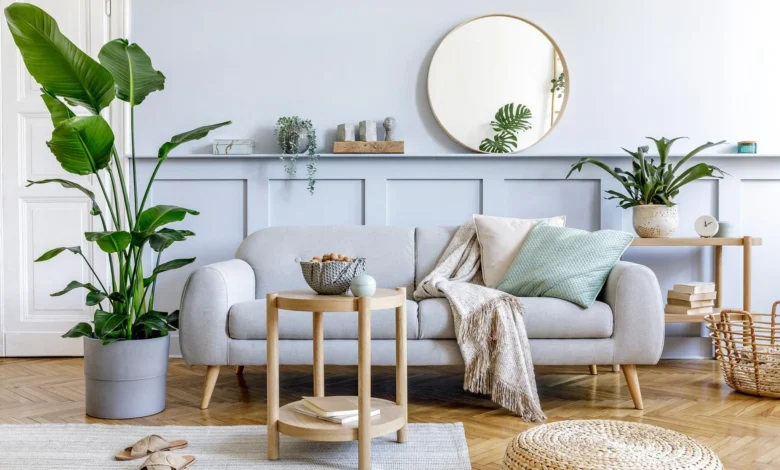Pyntekvister: A Comprehensive Guide to This Unique Craft

Have you ever come across a decorative piece so simple yet so captivating that it instantly transforms a space? That’s the quiet magic of pyntekvister. Rooted in Scandinavian tradition and shaped by modern creativity, pyntekvister those artfully arranged decorative branches—have become a beloved craft among interior stylists, hobbyists, and nature lovers alike. More than just home decor, this practice blends mindfulness, sustainability, and aesthetic expression into something truly timeless. Whether you’re a seasoned crafter or a curious beginner, this guide will walk you through the story, beauty, and endless possibilities behind pyntekvister.
Table of contents
- What Makes Pyntekvister So Special?
- The History Behind the Craft
- Materials Commonly Used in Pyntekvister
- How to Begin Your Own Pyntekvister Journey
- Modern Uses for Pyntekvister in Home Decor
- The Cultural Significance of Natural Craftsmanship
- Why Pyntekvister Continues to Inspire Creatives Today
- Conclusion
- FAQs
What Makes Pyntekvister So Special?
Pyntekvister is more than just a decorative trend it’s a craft rooted in a deep appreciation for nature, artistry, and the simple beauty of hand-made objects. The term itself evokes images of slender branches transformed into something magical. What makes special is its ability to bridge rustic charm with modern minimalism. It’s a craft that doesn’t shout for attention but subtly enhances a space with its delicate and organic presence. Whether arranged in a vase or used as wall art, these handcrafted branches create an atmosphere of calm and natural elegance.
The History Behind the Craft
Though pyntekvister feels fresh and contemporary, its origins are steeped in tradition. Scandinavian countries, especially Norway, have long embraced nature as part of daily life and interior aesthetics. In rural communities, crafting with natural materials was not just creative but practical. Over time, simple twigs were shaped, dried, and arranged into thoughtful decorations, often marking seasons, holidays, or personal milestones. This age-old tradition evolved, eventually being embraced by interior designers and home stylists who saw potential in its raw beauty.
Materials Commonly Used in Pyntekvister
One of the most appealing aspects of pyntekvister is how accessible the materials are. Unlike other crafts that require expensive tools or rare supplies, this one leans into the everyday beauty of natural twigs, branches, and stems. Crafters often collect what’s available around them—birch, willow, cherry, or even driftwood—all of which bring their own texture and character to the final piece. Today, many also experiment with painted or gilded branches, merging the rustic with the refined.
How to Begin Your Own Pyntekvister Journey
Starting with it doesn’t require years of experience or technical training. It begins with observation walking through a forest or park and noticing the forms and shapes of branches. Once collected, the process of cleaning, shaping, and arranging them becomes almost meditative. Some prefer to keep the natural bark, while others sand and paint their twigs to suit specific aesthetics. The beauty of this craft lies in its freedom; there are no rigid rules, only inspiration and instinct guiding the design.
Modern Uses for Pyntekvister in Home Decor
In today’s interior spaces it has found a firm place as a minimalist yet impactful decorative element. Whether displayed in tall floor vases, mounted on walls, or suspended from ceilings, these crafted branches add a sense of organic texture that complements both Scandinavian and contemporary design styles. They can be styled seasonally—left bare in the spring and summer, adorned with lights in the winter—or simply left as they are for a year-round aesthetic statement.
The Cultural Significance of Natural Craftsmanship
Pyntekvister is not just about decoration—it’s also a quiet celebration of slowness, sustainability, and mindfulness. In a world increasingly driven by fast trends and mass production, this kind of craft brings us back to tactile experiences and natural cycles. Each branch tells a story, each curve holds a memory. Especially in Nordic culture, where the changing seasons are revered it becomes a subtle way to mark the passage of time, connecting people with nature and tradition.
Additional insights:
- Pyntekvister reflects a growing movement toward “slow living,” where people intentionally embrace simplicity and purpose in everyday life.
- The act of gathering and preparing branches mirrors traditional practices of foraging and seasonal observation.
- Many crafters see as a form of meditation, where the repetitive yet mindful process fosters inner calm.
- Because each piece is handmade, no two arrangements are exactly alike making them symbolic of individuality and impermanence
- In Scandinavian folklore, tree branches were often seen as protective or spiritual symbols, lending deeper meaning to the craft.
- The craft also aligns with eco-conscious values, encouraging the reuse of natural materials over synthetic or disposable decor.
- In a digital world offers a return to the analog a hands-on reminder of the beauty found in nature’s imperfections.
Why Pyntekvister Continues to Inspire Creatives Today
There’s something deeply satisfying about turning simple twigs into works of art. For many artists and hobbyists it represents more than a craft it’s a practice in slowing down, in looking closer at the unnoticed beauty in everyday life. Its simplicity opens the door for endless creativity, and that’s why it continues to resonate with a new generation of makers. Whether used in homes, galleries, or seasonal displays remains a timeless craft that evolves with the individual.
Conclusion
Pyntekvister embodies everything we love about natural craft—simplicity, elegance, sustainability, and the power of creativity. It reminds us that beauty doesn’t always come from complex designs or expensive materials. Sometimes, it’s the gentle curve of a branch or the shadow it casts on a wall that brings warmth to a space. Whether you explore it as an artistic outlet, a home styling tool, or a quiet nod to tradition, pyntekvister offers something enduring and deeply personal to all who engage with it.
FAQs
What is pyntekvister?
Pyntekvister refers to decorative branches often used in Scandinavian-style home decor. They can be natural or crafted and are used to bring a touch of nature indoors.
How do you make pyntekvister?
To create your own pyntekvister, gather natural twigs or branches, clean them, and arrange them in a vase or wall display. You can also paint or decorate them to suit your style.
Where can I buy pyntekvister?
You can find pyntekvister at Scandinavian decor stores, craft markets, online platforms like Etsy, or by making your own using foraged branches.
Are pyntekvister environmentally friendly?
Yes, especially when made from foraged or recycled natural materials. They promote sustainability by reducing waste and encouraging natural crafting.
Can I use pyntekvister all year round?
Absolutely. Pyntekvister can be styled seasonally or left minimal for a timeless look. They’re perfect for year-round interior decoration.





